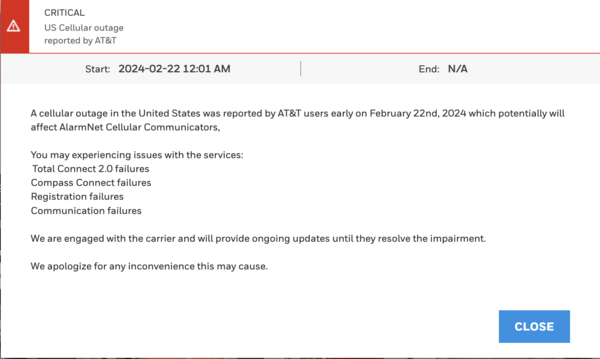Rogers to Sunset 2G/3G Network in 2025
Posted By Julia RossRogers has set a date of March 31, 2025 for its 2G/3G network sunset. If you are a Canadian customer with a Rogers 2G/3G communicator, your system will cease to communicate via cellular upon shutdown. At best, you will see a trouble condition. At worst, communication will be cease completely.
Rogers is a large cellular provider in Canada. When AT&T and Verizon announced their respective 2G/3G network sunsets a few years back, Rogers made the decision to keep the portion of their network that is used by alarm communicators active. In the intervening years, it has been working to beef up its infrastructure. The time has now come to sunset the remainder of the older network.
If you have an alarm system with a Rogers cellular communicator you should begin planning an upgrade. This may require that you upgrade your whole system, or just your cellular communicator. Whichever the case, now is the time to begin planning. If your system uses cellular as its only means of communication, and you have one of these Rogers 2G/3G communicators, your system will be left unable to communicate once the shutdown takes place. In addition, you will see a trouble condition displayed on your system that you will be unable to clear.
If you have a dual-path system with a Rogers 2G/3G cellular communicator, then your system will still be able to communicate after the shutdown, but you will have a trouble condition on the system that won't clear until you either disable cellular communication, or correct the problem. In this case, correcting the problem means replacing the cellular communicator. Depending on your alarm panel, this may or may not be possible without replacing the entire panel.
Alarm.com customers who are affected by this sunset will soon begin seeing prompts telling them to upgrade. Starting in October, Alarm.com customers who still have a 2G/3G Rogers cellular communicator will see a trouble message when they log into the customer app or website. The message will instruct them to upgrade their communicator soon in order to avoid a service interruption.
This news may seem dire, but don't worry, Alarm Grid is here to help you through the transition. In future posts, we'll be providing additional information, including special promotional pricing to help you upgrade in the least painful way possible. We'll also be here with plenty of information on how best to upgrade. In the meantime, if you have questions you can send us an email to support@alarmgrid.com.







